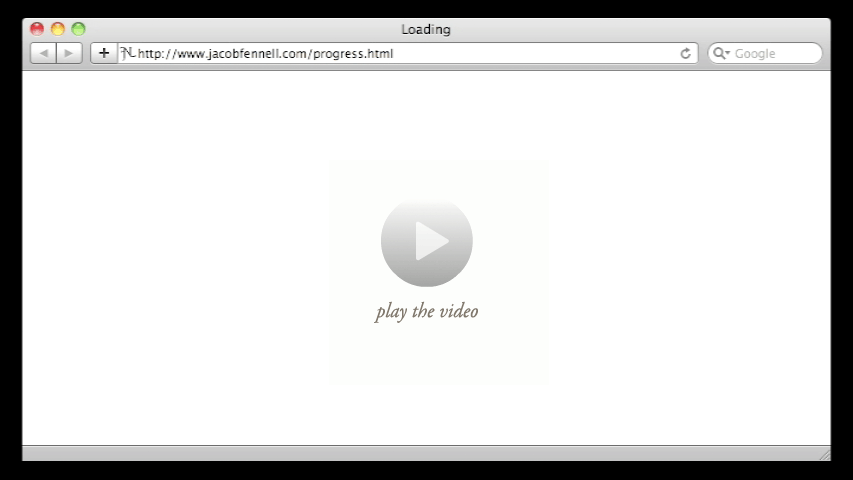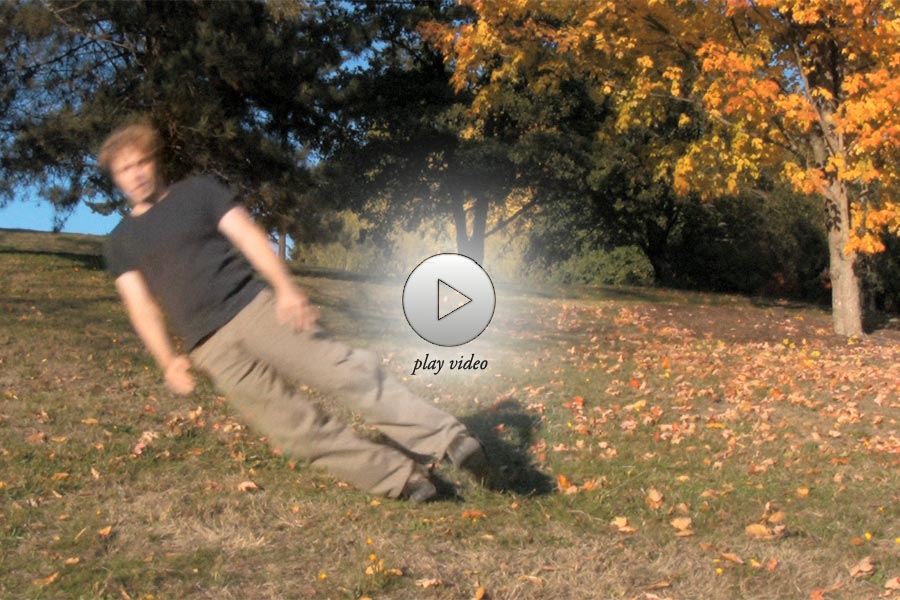



















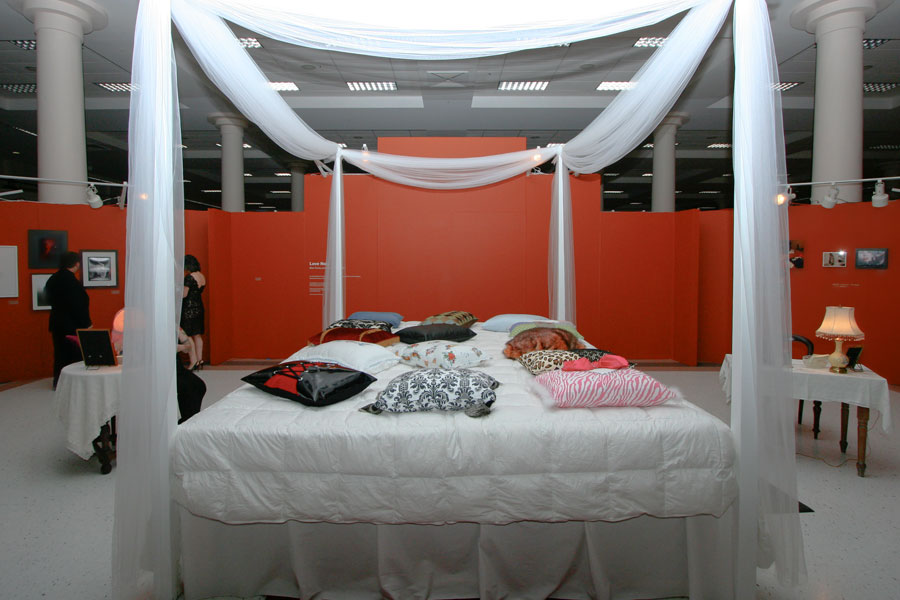

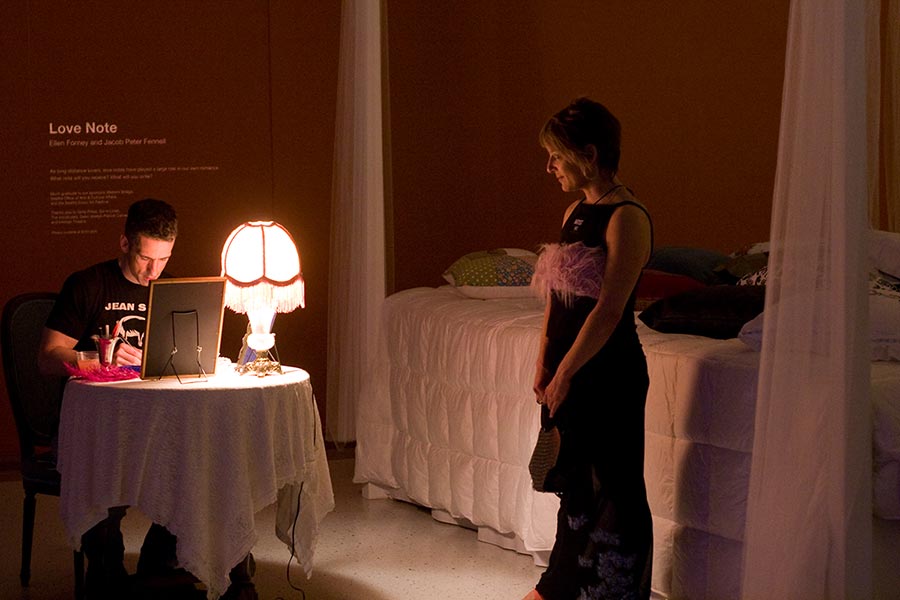



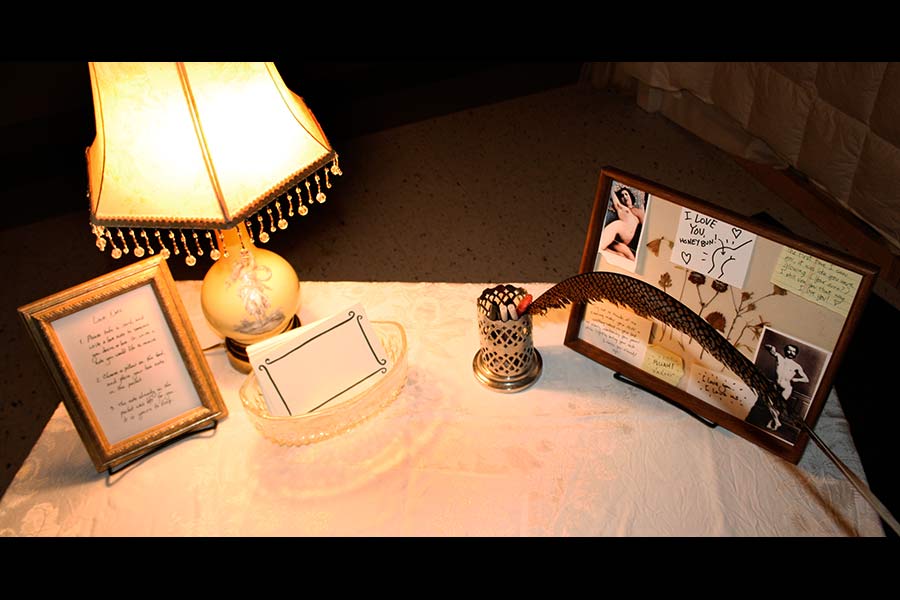
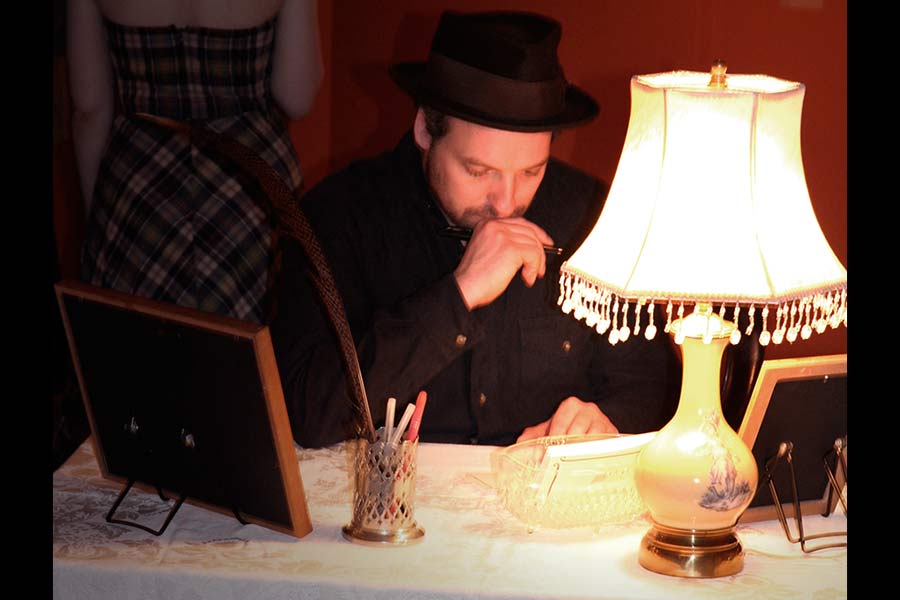
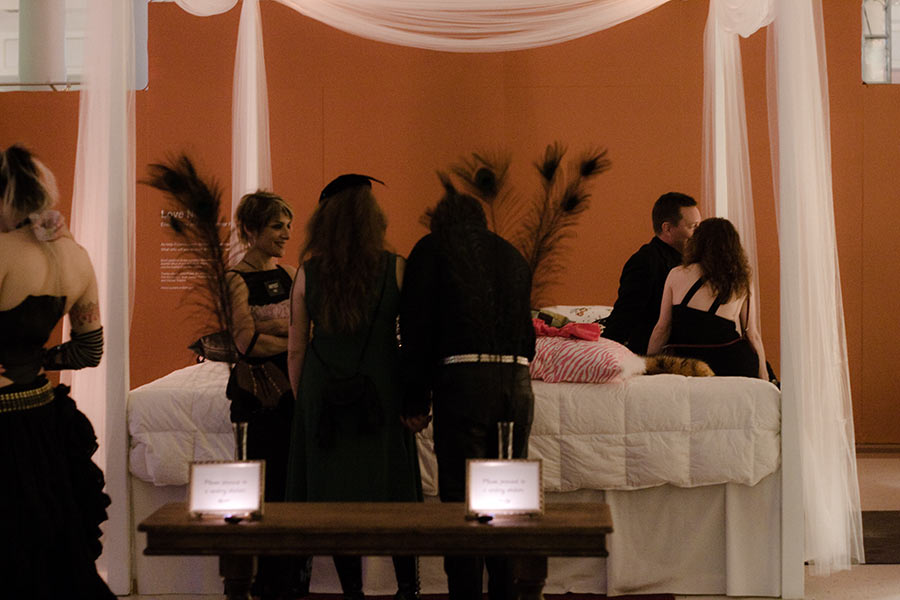
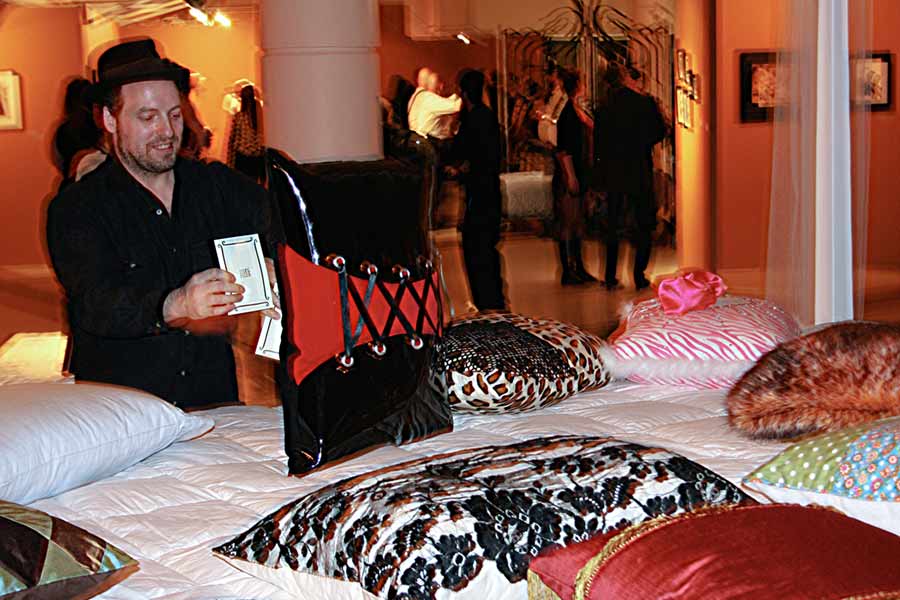
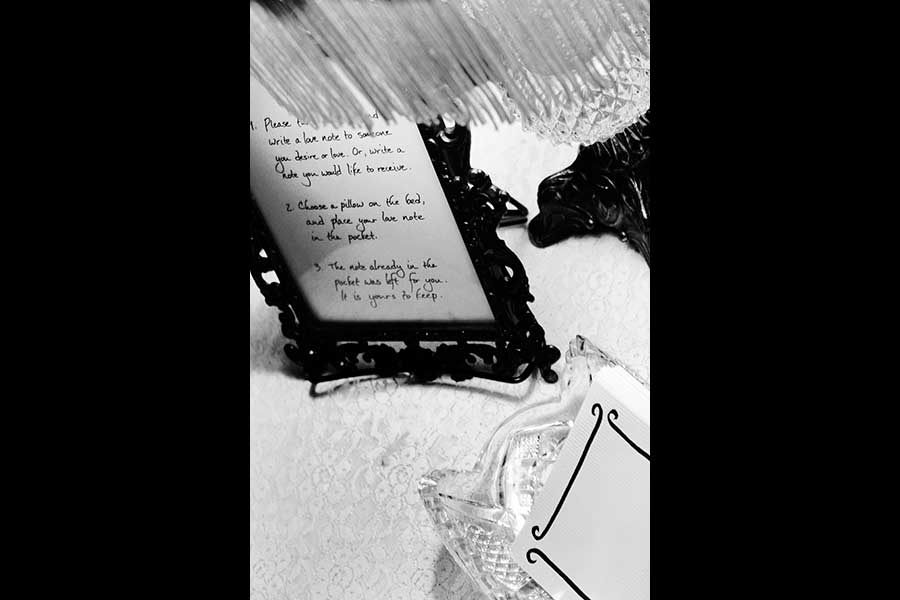
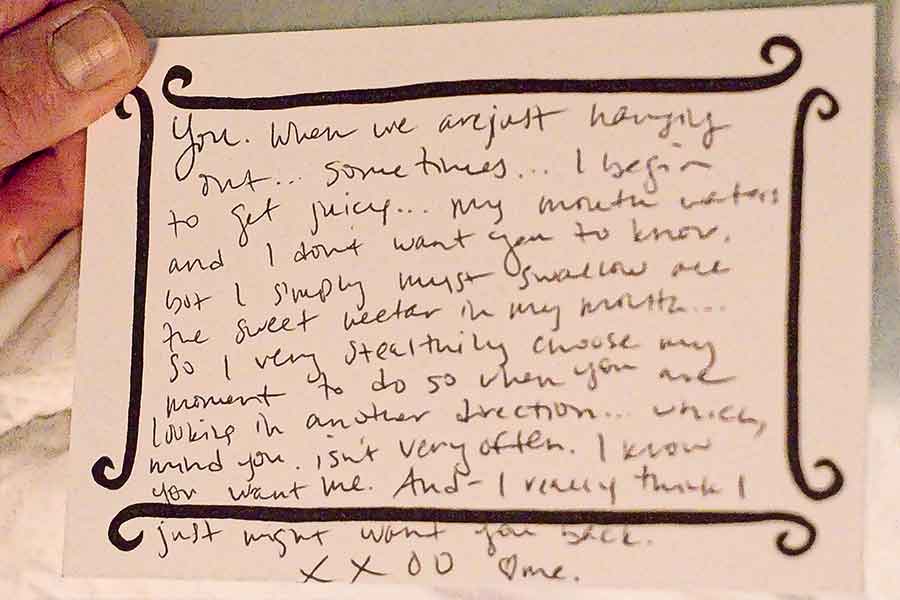
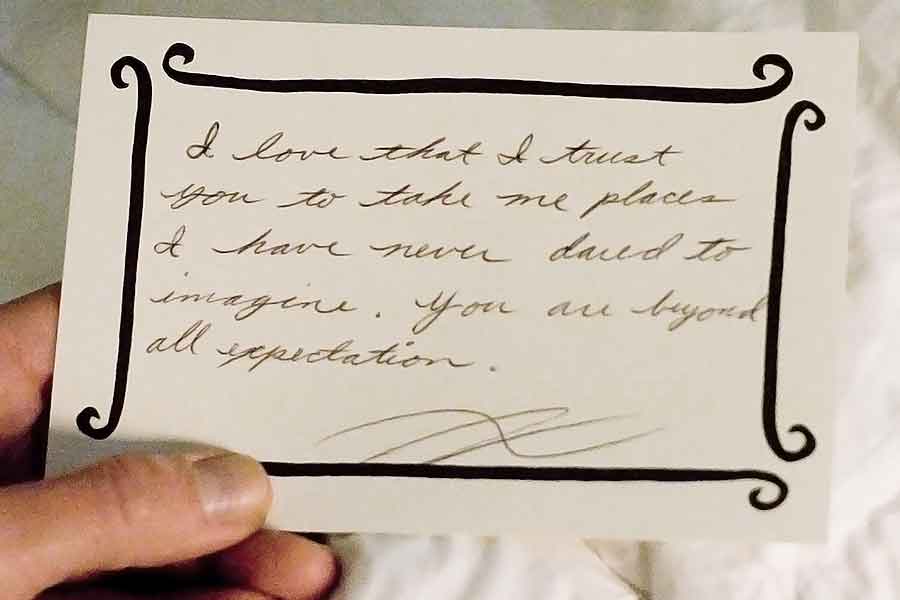
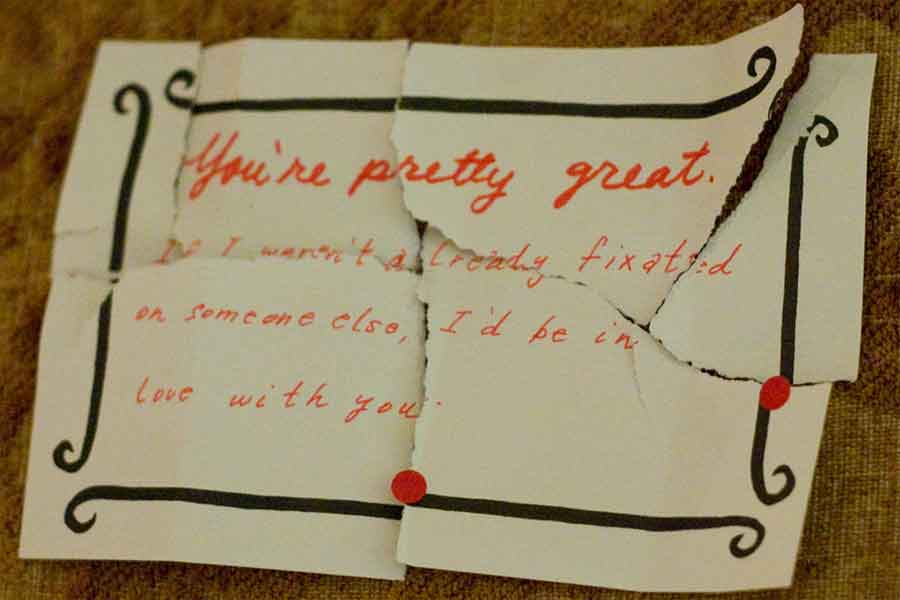
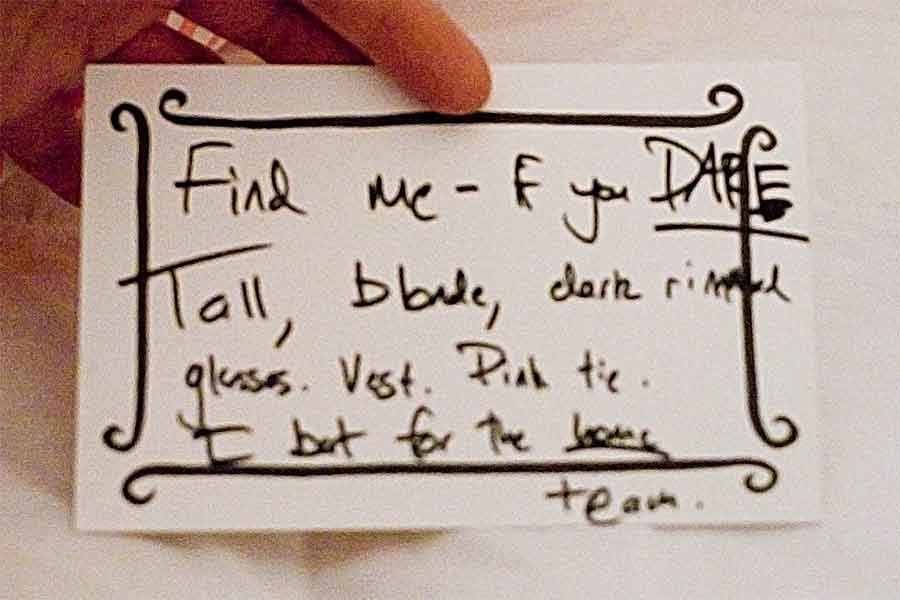
a collaboration with Ellen Forney
Installation consisting of two writing stations, oversized poster bed (10' × 9' × 12'), and 15 unique pillows with love note pockets.
Love Note invites its participants to write, give, and receive a love note. On the two tables are framed instructions:
- Please take a card, and write a love note to someone you desire or love. Or, write a note you would like to recieve.
- Choose a pillow on the bed, and place your love note in the pocket.
- The note already in the pocket was left for you. It is yours to keep.
Each participant is connected to the previous author and the future recipient through their choice of bed pillow in which to hide their note. Love Note is designed to draw out the passion, tenderness, and sensuality of the individual festival-goers, an energy they bring out to the larger space through their own emotional reactions by sharing the notes they received, and by encouraging others to participate in the project.
Exhibited: April 30–May 2, 2010; Seattle Erotic Arts Festival.
Grants and Commissions: Western Bridge, Seattle Office of Arts & Cultural Affairs, and Seattle Erotic Arts Festival.
Additional Support: The Vocabulary, Girlie Press, Sin in Linen, Sean Joseph Patrick Carney, Intiman Theatre, and Richard Hugo House.
Review: Dan Savage writes on The Stranger's blog, Love Note is "charming," "brilliant," and his favorite installation of the festival.
Interview with Cienna Madrid.
Interview with SEAF.
Video. 2010.
The tools for making art are a product of technology. Some artists use tools utilizing technology that has been available and well known for millenia. Others produce their art with the newest of technology. And, some other artists play with video.
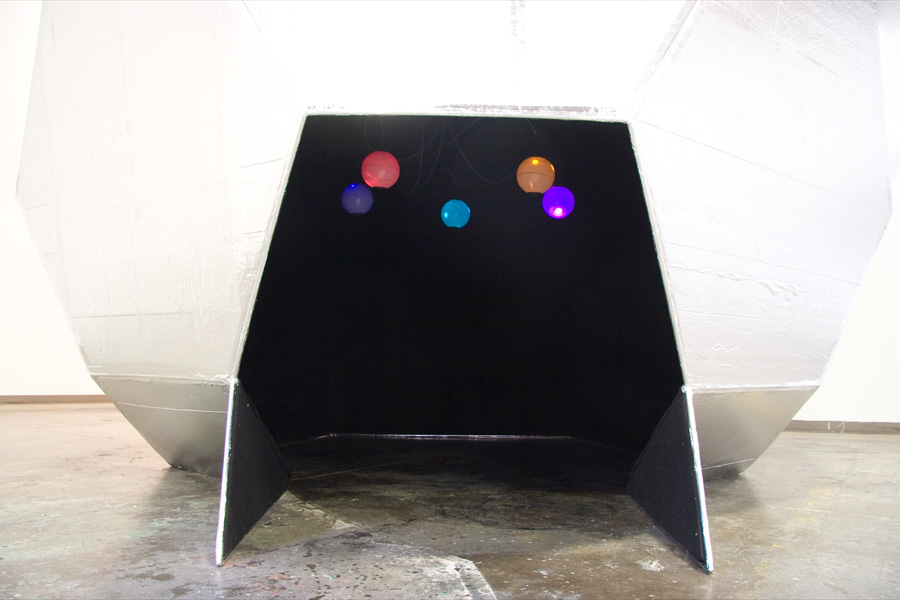
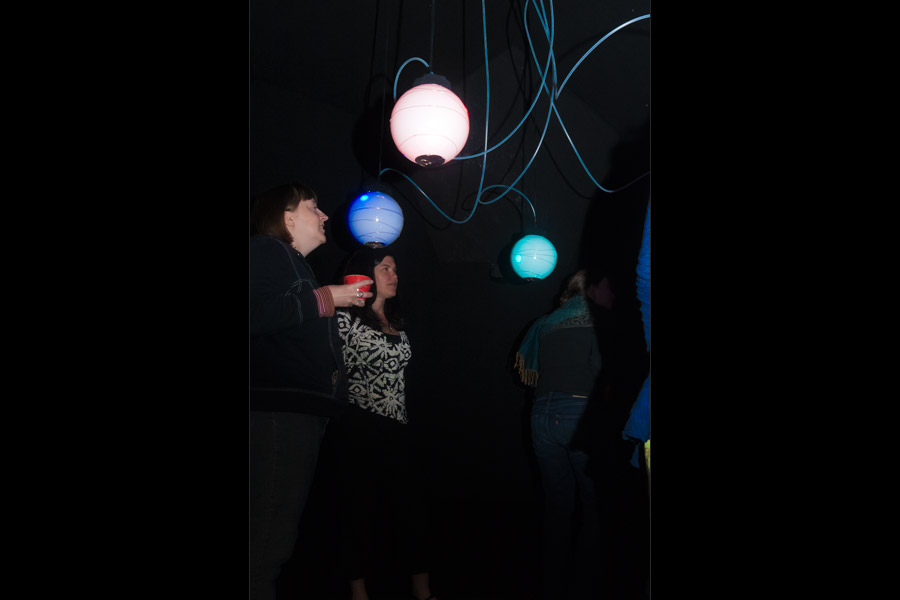
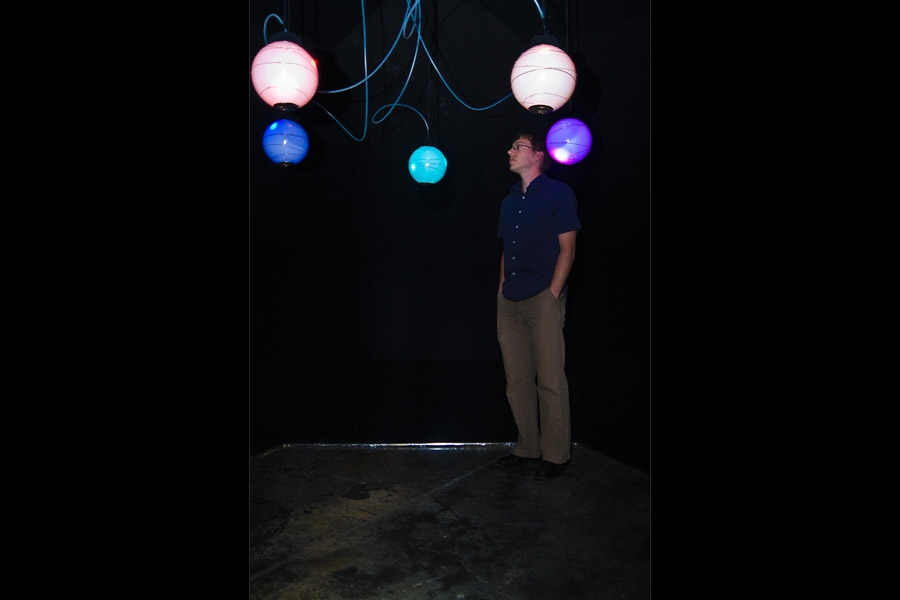
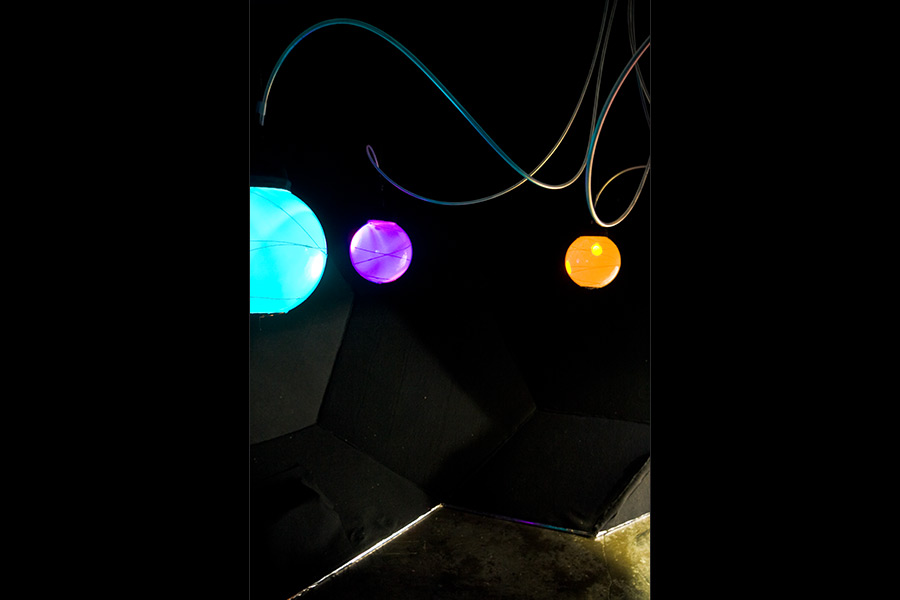
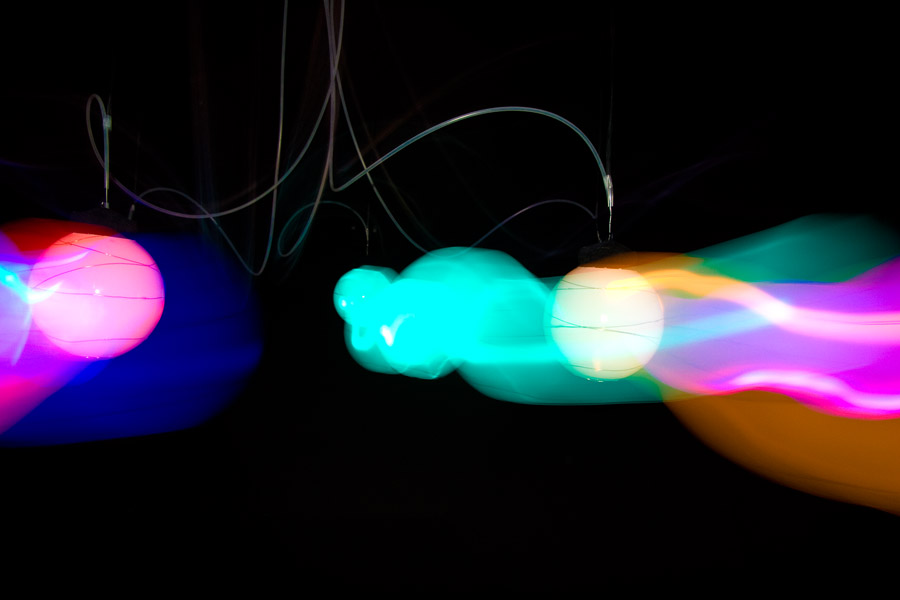
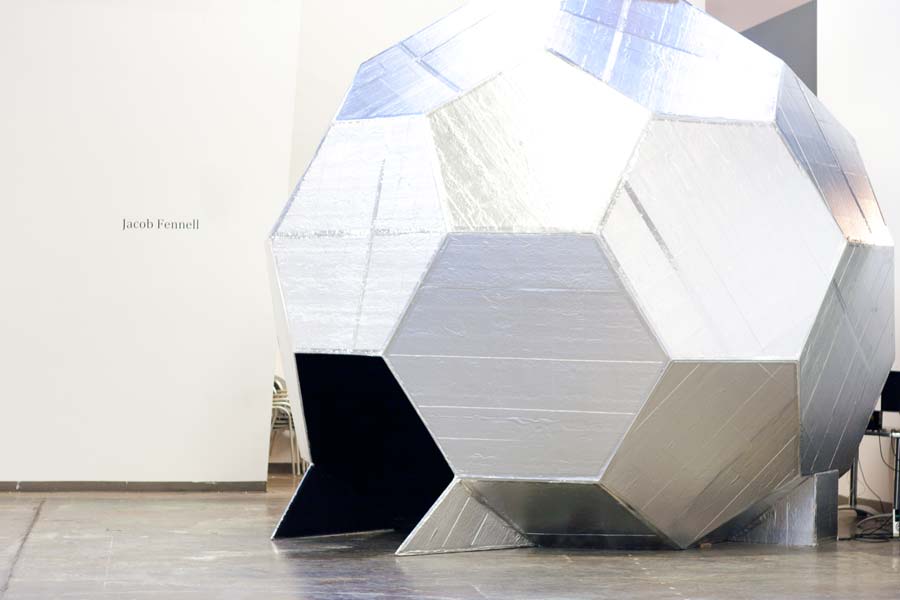
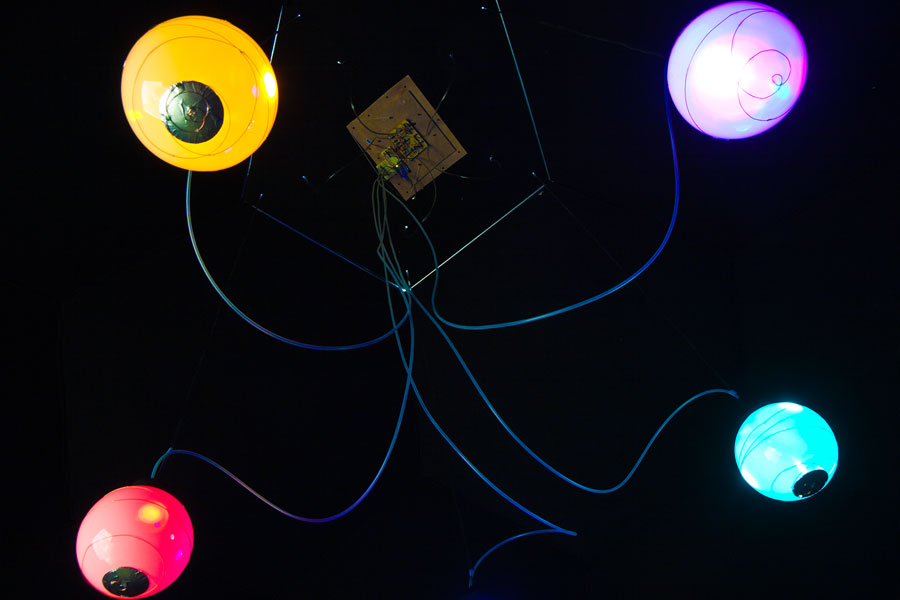
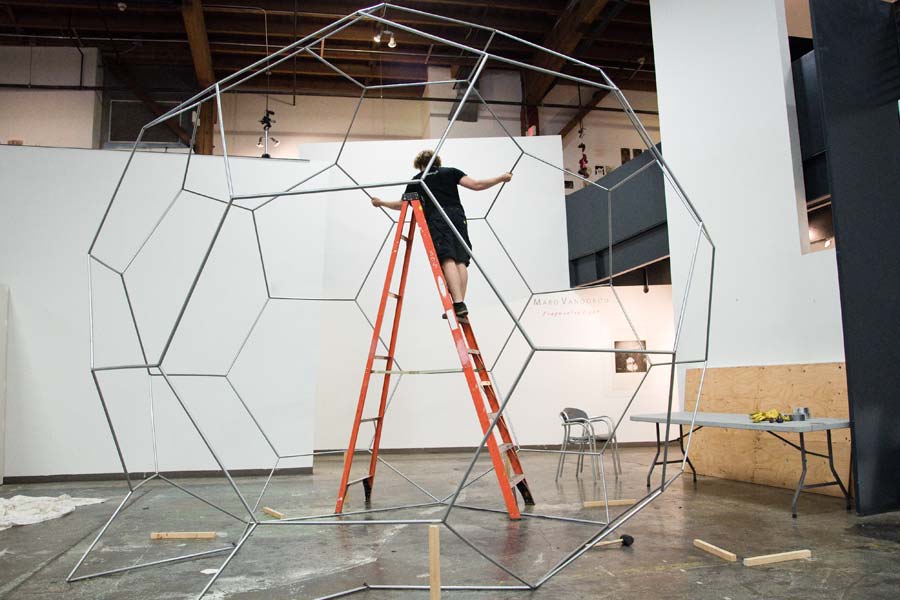

Sound installation, 15' diameter steel framed truncated icosahedron, custom electronics, custom software. 2009.
Image Construct is a sound installation that is composed in real time by the participants of the space. Digital sound samples are classified by a color, and mixed into the sound track based on the influence of peoples' proximity to each orb. The intention is to evoke a cinematic soundtrack and mental imagery without a visual picture frame.
2 Channel Video. 2009.
Fall was a meditation on time and gravity, and assumed my assumptions were always going to be incorrect. I can't entirely predict the future. This meditation spawned from considering two distinct aspects of Einstein's theory of general relativity. Gravitational Time Dilation where objects with different proximities to a gravitational source (i.e., Earth) will experience time at different compared rate. And Relative Motion Time Dilation where an object in relative motion experiences time at a different rate. The original plan was to meditate on leaves falling. In my impatience I became increasingly activated in the causation of leaves falling, and blundered into my own body falling. Indeed, my perception of time seemed different while in motion, and warranted another test.

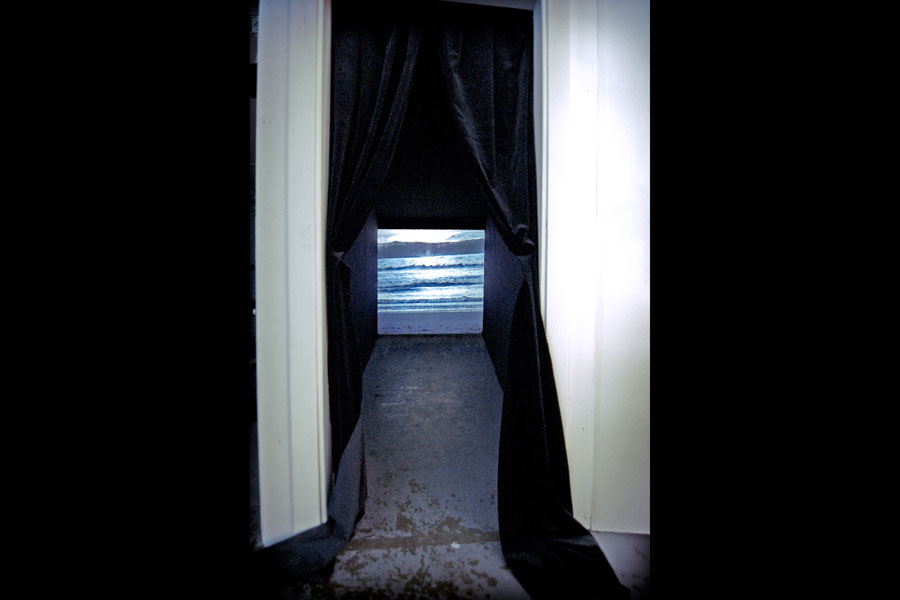
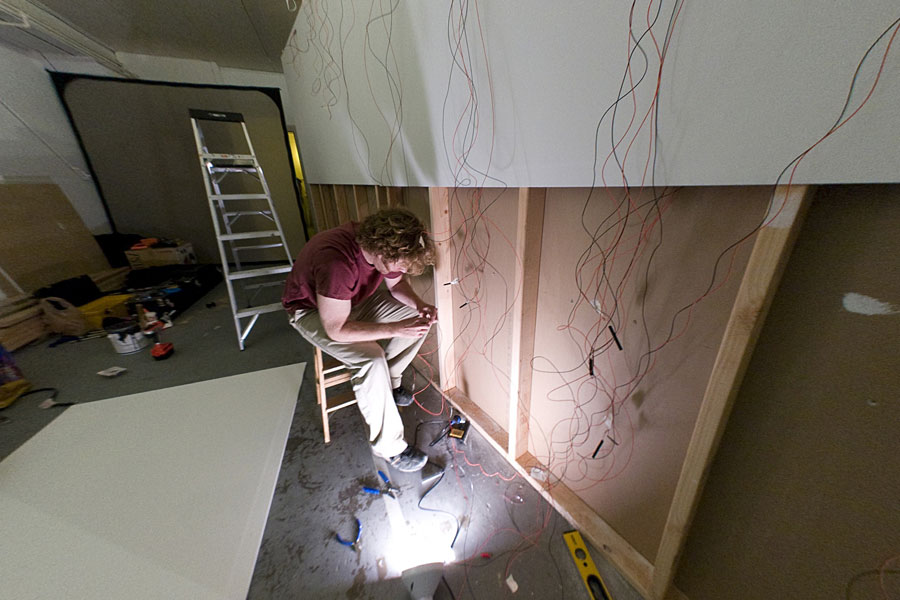
Video installation chamber, 9'×24'×9'. 2008.
A high-definition video of waves crashing on a beach was projected on an 8' by 8' rear-projection screen. As a participant entered the chamber, the video and associated sound slowed. The audio tone of the sea became lower and rumbling, and the wave crests crumbled slower. This rate of slowing was a function of the primary viewer's distance from the screen. When the viewer was within 4' of the screen, the speed of play was so slow the video effectively felt stopped. The audio at that rate was a chest vibrating low rumble. As the viewer exited the piece, the waves accellerated again until the viewer's presence exerted no influence on the space, which was the standard full speed rate of play.
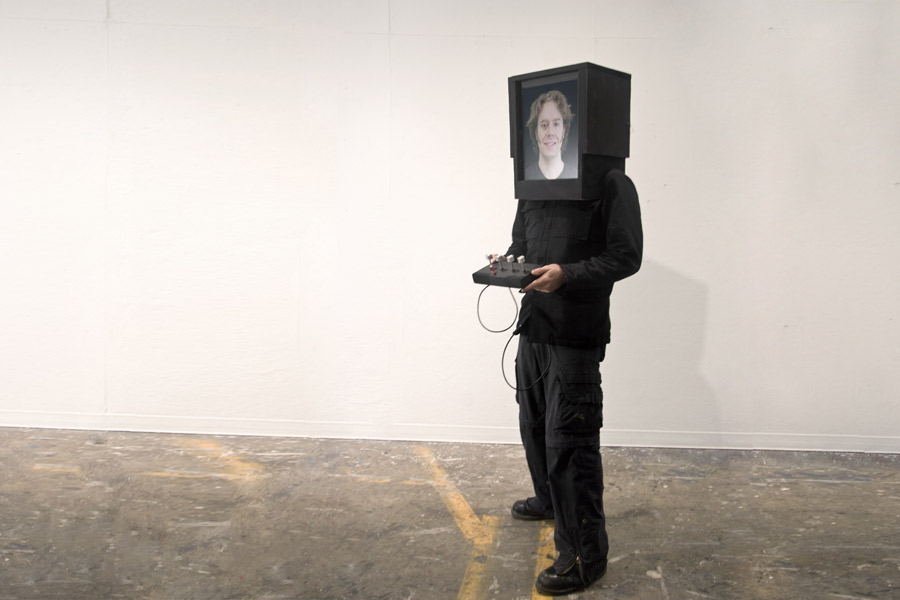
LCD helmet, custom electronics, custom software, the artist. 2008.
Facade was a realtime avatar for the artist. Fennell hands over control of his representation to the viewer while they have a conversation. The viewing participant controls the mouth, eyes, and eyebrows of Fennell's face by turning the knobs and toggling the switches on the control unit.












